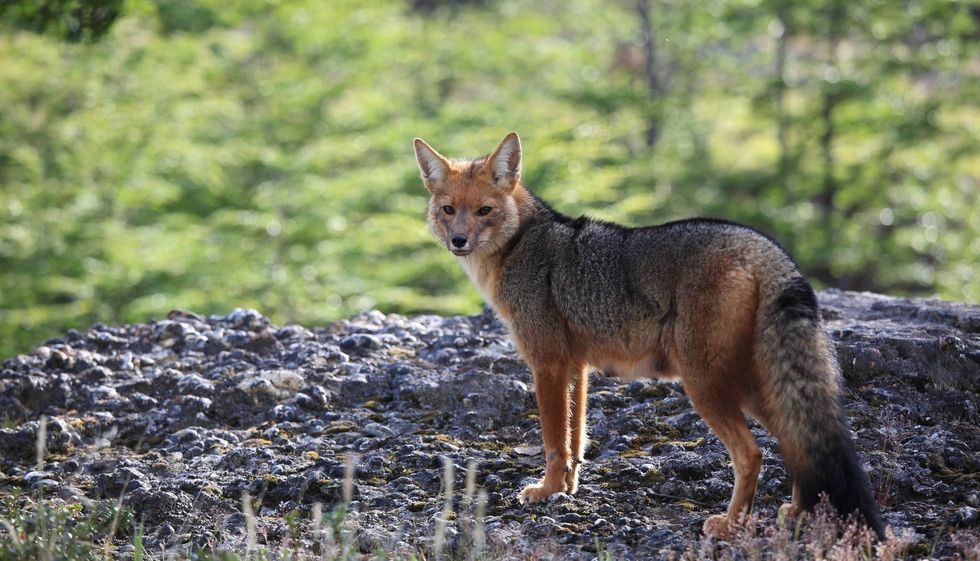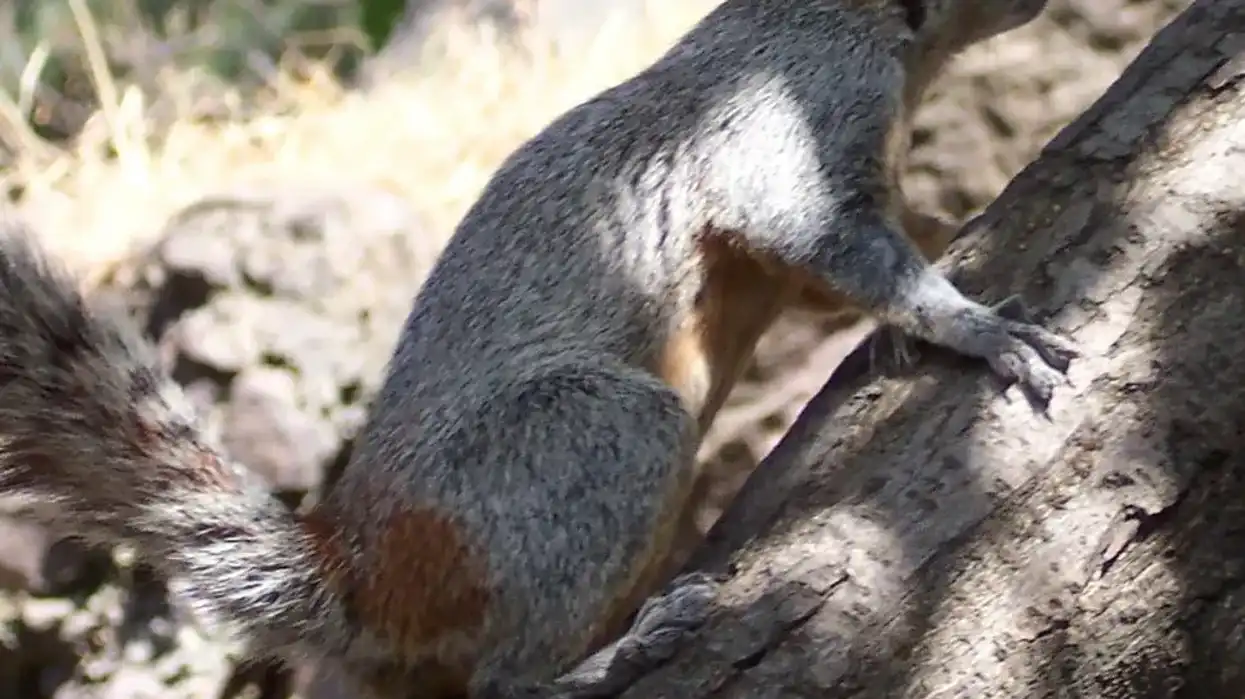There are six different species of foxes under the name of South American fox. They belong to the family of Canidae and are known by the genus Lycalopex. These foxes are not real foxes, hence their genus is called Pseudalopex alternatively.
The IUCN Red List uses the term Pseudalopex. The word Pseudalopex literally translates into 'false fox'. They are associated with the genus Canid and bear resemblance to a wolf or a jackal.
They are also known as a 'zorro'. The word 'zorro' has been taken from Spanish which means 'fox' in English.
All species of South American foxes fall under the class of mammals. They are terrestrial and nocturnal animals. They don't stay in groups and are solitary in nature.
They come together only while mating happens which varies between the month of July and August. The species that are regarded as South American foxes are the South American gray fox, pampas fox, hoary fox, culpeo fox, Darwin's fox, and Sechuran fox.
If you like what you read, do check out our articles on the large flying fox and goblin bat.
South American Fox Interesting Facts
What type of animal is a South American fox?
South American foxes fall under the family name Canidae. Although they are called foxes, they don't belong to the category of real foxes. They resemble jackals and wolves.
What class of animal does a South American fox belong to?
They fall under the class of Mammalia. The average number of babies they produce each time is variable and it ranges between one to six. The pups, kits or cubs feed on the breast milk of their mother.
How many South American foxes are there in the world?
No verifiable data is available on the exact number of South American foxes existing in the world according to the IUCN Red List.
Where does a South American fox live?
The Chilla (Lycalopex griseus) lives in the southern part of South America, in Chile and Argentina, on both sides of the Andes. The Culpeo fox is found towards the west of the Andes mountain range of South America in Argentina, Bolivia, Peru, Chile, and Ecuador.
The Pampas fox is found in the southern corner of South America in central Argentina, Uruguay, eastern Bolivia, Paraguay, and Brazil.
What is a South American fox's habitat?
The South American gray fox or the Argentine gray fox is also known as the Patagonian fox. It is a native of Argentina, Patagonia, Chile, and Peru.
The South American fox habitat is unique. They are tolerant to all kinds of weather conditions that range from dry-hot to cold.
They live in the arid scrublands of Argentina, the cold Patagonian steppe, and in the forests of Chile. Culpeo foxes or the Zorro Culpeo like to stay in the foothills of the Andes range, in the forests of the southern part of South America. The Pampas fox much like the Patagonian fox is also tolerant to all weather conditions.
They too, stay in the scrublands, deserts, and forests of South America. They prefer staying in open places.
Who do South American foxes live with?
We all know that a fox by nature stays in a pack or group. However, these animals lead a more solitary life. They come together only while mating and raising their babies.
How long does a South American fox live?
The South American gray fox has a lifespan of six to eight years normally but can live up to 12 years in captivity. The Culpeo fox or the Zorro Culpeo has a life span of around 11 years and the Pampas fox has a life expectancy of 13 years on average.
How do they reproduce?
These foxes try to lure their female counterparts by making various sounds and showing their genitals. The process of reproduction takes place usually between the months of August and December.
The gestation period of these mammals is between 53-60 days. They mate usually during the month of July. They give birth to up to eight pups or kits, depending upon the species.
What is their conservation status?
According to the IUCN Red List, the following species of South American foxes, namely Chilla (Lycalopex griseus), Culpeo (Lycalopex culpaeus), and Pampas fox (Lycalopex gynnocercus) have been listed as Least Concern.
South American Fox Fun Facts
What do South American foxes look like?
A South American gray fox is rusty gray in color. It has a pointed face and a black spot on its chin. These foxes have long bushy tails that have a dark black tip.
The culpeo fox looks like a red fox and has blackish-red fur. The belly of these animals is white with a reddish tint. They too have bushy tails with black ends.
The Pampas fox looks similar to a Culpeo fox. It has reddish-black fur and a bushy tail with a black tip. The only distinguishable feature of this species is a black muzzle. All the species of these animals look similar and have long pointed ears.
How cute are they?
A South American fox belongs to the category of Canid hence resembles dogs in many ways. When these animals reach adulthood, they do not look cute. However, their young ones look quite cute with their cute eyes and cuddly fur.
How do they communicate?
All species of the South American fox, namely the Culpeo fox, the South American gray fox, and the Pampas Fox, communicate with each other by growling, howling, and barking.
How big is a South American fox?
These animals have a length of 22-36 in (56-72 cm) and are 15.7-17.7 in (40-45 cm) tall. The length of their tail is 10-20 in (25-50 cm).
How fast can a South American fox move?
No verifiable data is available with regard to their speed.
How much does a South American fox weigh?
The average weight of South American foxes (also known as Zorro foxes) varies from 8.8-14.3 lb (4-6.5 kg). The weight of their female counterparts is slightly lesser.
What are the male and female names of the species?
These animals do not have a separate name for the female species. However, a female fox is commonly called a vixen.
What would you call a baby South American fox?
These animals become capable of reproduction on reaching the age of one year old. On carrying out the process of reproduction, they give birth to one to six offsprings on average. The offsprings are known as pups, kits, or cubs.
What do they eat?
The diet of this species consists of birds, carrion, fruit, rabbits, rodents, lizards, and livestock. They have been regarded as important in controlling the population of rodents. They are also seen as a threat to farmers as they attack livestock very often.
Are they dangerous?
Just like the other species, they are not dangerous to human beings, however, they attack sheep and livestock. They also cause a disease called rabies which is often life-threatening.
Would they make a good pet?
They are wild animals and should be left alone in their natural habitat and are not fit to be domesticated. However, these foxes are kept in zoos in captivity.
Did you know...
The Culpeo fox is the largest canid belonging to the genus Lycalopex.
Since their diet consists of birds, rabbits, and carrion, they help humans in scavenging carrion and keeping the environment clean.
These animals dig burrows called dens when they are about to give birth to their young ones. Their burrows have numerous exit points so that they can escape if an enemy attacks them.
Both parents are seen taking care of the young ones and feeding them.
These animals are monogamous and have one mate throughout their lives.
These animals are often put to the threat by humans as they are hunted down for their pelts.
Their fur becomes denser during winters.
Why are South American foxes important?
These animals have a diet that comprises birds, carrion, rabbits, fruit, and rodents. They are important for controlling the population of rodents, thus maintaining a predator-prey balance.
What is the difference between American fox vs European fox?
A European fox (Vulpes vulpes) is the largest true fox and is widely distributed across the world. The South American species differs slightly from the European ones in appearance.
The length of an American fox can range between 22-36 in (56-72 cm), whereas a European fox is 17.7-35.4 in (45-90 cm).
The species found in South America is known by the genus Lycalopex and the ones seen in Europe are known as Vulpes. The red fox European species of these animals are seen in North America and Australia too, hence they resemble the ones in North America but are distinct from the South American species.
A European fox differs in skin color from the species seen in South America. A red fox has red fur and the end of its tail is white as opposed to the South American ones which always have a blackish tint to their fur.
Here at Kidadl, we have carefully created lots of interesting family-friendly animal facts for everyone to discover! Learn more about some other mammals from our Arctic fox facts and flying squirrel facts pages.
You can even occupy yourself at home by drawing one on our South American fox coloring pages.










